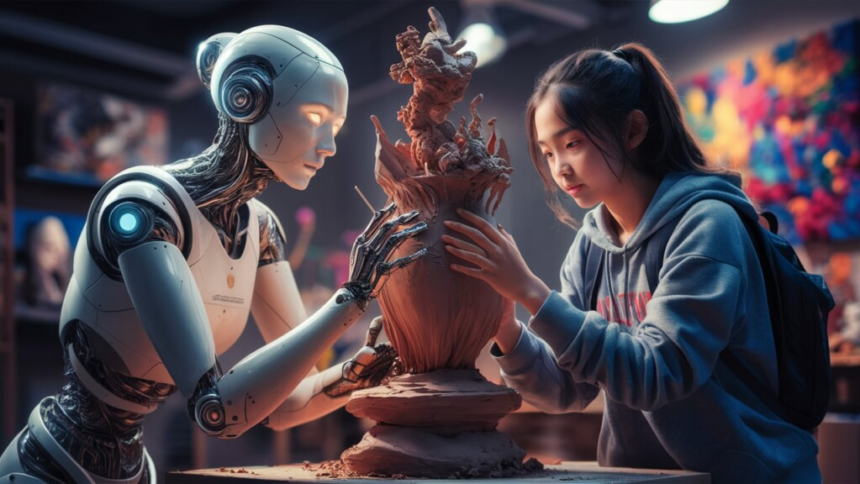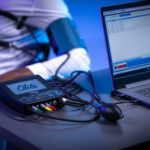Generative AI, a revolutionary technology, is making waves across various sectors, including content creation, art, and healthcare. One fascinating question is whether generative AI can create passport photos. Passport photos have specific requirements and standards, posing an interesting challenge for AI technology. This article explores the potential of generative AI in creating passport photos. It focuses on high-quality content and keyword optimization. This is especially relevant in light of Google’s recent updates.
Understanding Generative AI
Generative AI refers to artificial intelligence that can generate new content by learning from vast datasets. These models include Generative Adversarial Networks (GANs) and Variational Autoencoders (VAEs). They can create realistic images, text, music, and even videos. By analyzing and understanding the underlying patterns in the data, generative AI can produce content that closely resembles human-made creations.
The Evolution of Photography with Generative AI
The integration of generative AI into photography has brought about significant changes, transforming how images are captured, edited, and perceived. Here are some key ways generative AI is redefining creativity in photography:
Enhancing Image Quality
Generative AI has the capability to enhance image quality by reducing noise, increasing resolution, and restoring old or damaged photos. AI algorithms can analyze low-resolution images. They can generate high-resolution versions. This makes it possible to produce stunning visuals even from subpar originals.
Creative Filters and Styles
AI-powered tools can apply creative filters and styles to photos, transforming ordinary images into works of art. For instance, AI can mimic the styles of famous painters, creating unique and visually appealing compositions. This fusion of technology and artistry allows photographers to experiment with new aesthetics and push the boundaries of conventional photography.
Generating Entirely New Images
Generative AI can create entirely new images from scratch, offering endless possibilities for artistic expression. By training on diverse datasets, AI models can generate realistic faces, landscapes, and abstract art. This capability opens up new avenues for photographers and artists to explore innovative concepts and ideas.
Automating Photo Editing
Generative AI simplifies the photo editing process by automating tasks such as background removal, color correction, and object recognition. Photographers can now focus more on their creative vision while AI handles the technical aspects of editing. This efficiency not only saves time but also enhances the overall quality of the final product.
Real-World Applications of Generative AI in Photography
The applications of generative AI in photography are vast and varied, with numerous industries benefiting from its capabilities. Here are some notable examples:
Fashion and Advertising
In the fashion and advertising industries, generative AI is used to create captivating visuals for marketing campaigns. AI-generated models can wear virtual clothing, allowing brands to showcase their products without the need for physical photoshoots. This innovation reduces costs and accelerates the production process.
Entertainment and Media
Generative AI is transforming the entertainment and media sectors by enabling the creation of realistic special effects and virtual characters. Filmmakers can use AI-generated imagery to enhance visual storytelling, creating immersive experiences for audiences.
E-commerce
E-commerce platforms leverage generative AI to enhance product images and create virtual try-on experiences. Customers can see how products will look in real life, leading to more informed purchasing decisions and improved customer satisfaction.
Personalized Content
Generative AI enables the creation of personalized content tailored to individual preferences. Photographers and businesses can use AI to generate custom images. These images resonate with their target audience. This fosters deeper connections and engagement.
Ethical Considerations in AI-Generated Photography
The benefits of generative AI in photography are undeniable. However, it is essential to address the ethical considerations associated with its use. Here are some key ethical concerns:
Authenticity and Misrepresentation
AI-generated images can be highly realistic, raising questions about authenticity and the potential for misrepresentation. It is crucial to ensure transparency and clearly indicate when an image has been generated or edited by AI.
Privacy and Consent
The use of personal data to train AI models raises privacy concerns. Photographers and businesses must obtain explicit consent from individuals before using their images for AI training purposes. Implementing robust data protection measures is essential to safeguard privacy.
Intellectual Property
Generative AI can create content that resembles existing works, leading to potential copyright issues. It is important to respect intellectual property rights. We must ensure that AI-generated content does not infringe on the rights of original creators.
Ethical Use
The ethical use of AI-generated content is paramount. Using AI to create misleading or harmful images, such as deepfakes, is unethical and can have serious consequences. Establishing guidelines and regulations for the responsible use of generative AI is essential to prevent misuse.
You can explore the ethical considerations of generative AI. Read more about What Are Some Ethical Considerations When Using Generative AI.
Conclusion
Generative AI is redefining creativity in photography, offering new possibilities for artistic expression and innovation. AI enhances image quality. It automates editing processes. It is transforming how photographers and artists create and interact with visual content. However, it is essential to address the ethical considerations associated with AI-generated imagery to ensure responsible and transparent use.
We continue to explore the potential of generative AI. It is crucial to strike a balance between technological advancement and ethical responsibility. By doing so, we can harness the power of AI to enhance creativity. This allows us to push the boundaries of what is possible in the world of photography.
For more information on the potential of generative AI in creating passport photos, read our detailed article. Visit Can Generative AI Create a Passport Photo?.
Generative AI has undoubtedly revolutionized the field of photography, blending technology and artistry in unprecedented ways. As we embrace this technological marvel, let us also remain mindful of the ethical implications. We should strive to use AI responsibly. It should serve as a tool for positive and creative transformation.



